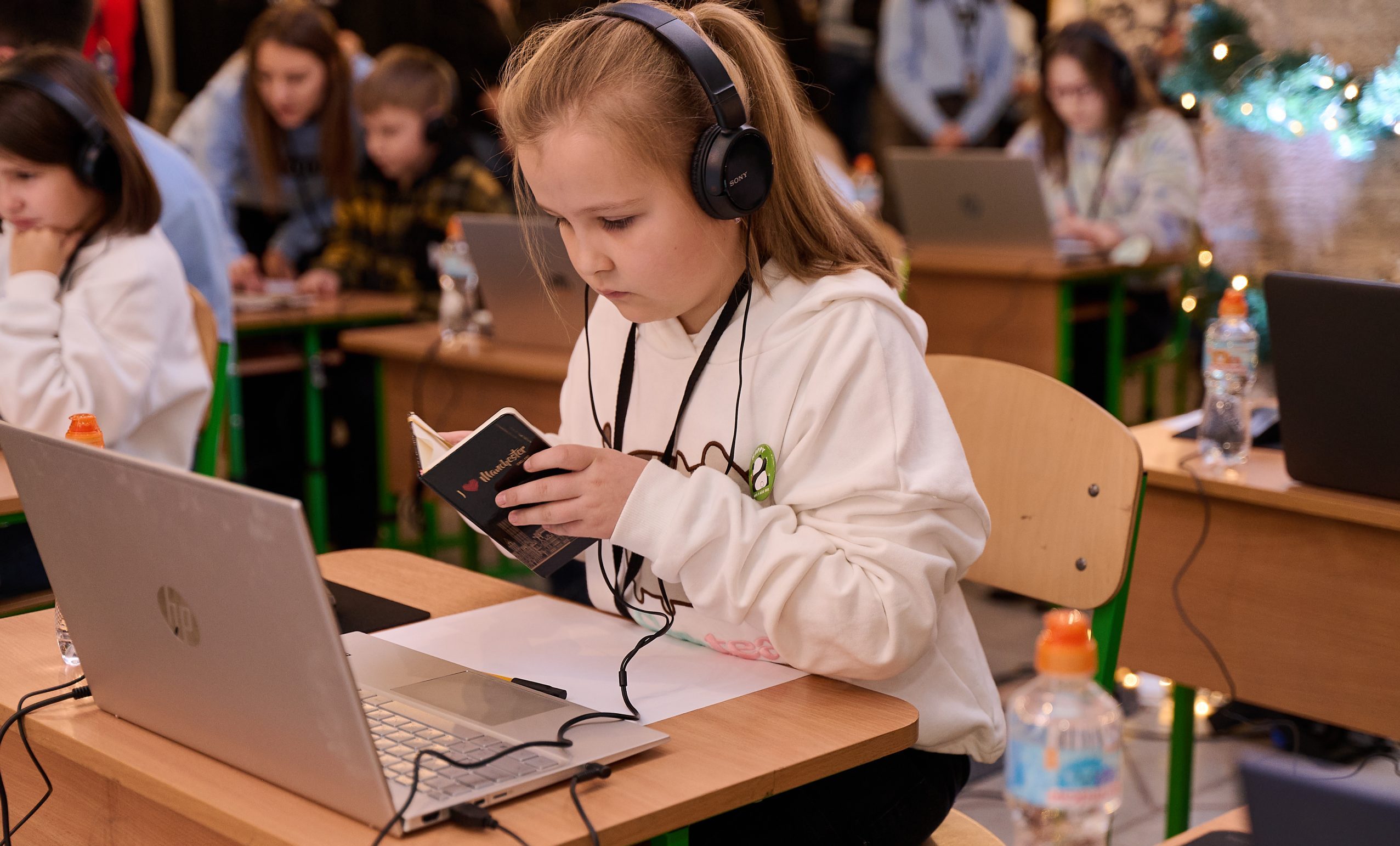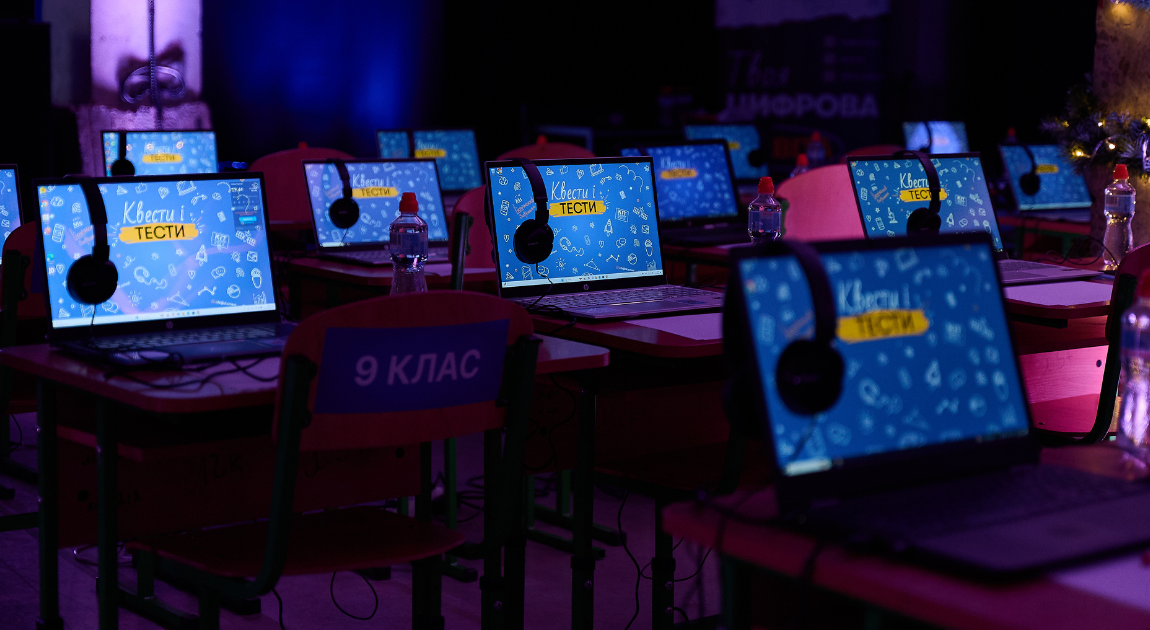Even as eLearning has reached far beyond the old-school online multiple questions format, there is still a sentiment that it somehow just doesn’t feel “real enough” compared to in-person education. This is more than just an illusion or nostalgia; humans are social creatures, and we crave interaction. This is why video streaming hasn’t killed movie theaters, after all. However, the upsides of eLearning are solid enough to grant it a place in our lives, even as a major format. The trick is to combine digital education with physical, in-person events to ensure that what happens on the screen is reinforced with what happens offline.
There are also practical cases to prove the point. The story of a couple meeting on Duolingo, of all places, has been a meme for a while – proving the platform team knew what they were doing with the chats, forums, and events. Lionwood.software has yet another case to share – the KIT hybrid olympiad for school students as an offshoot of the NIT remote learning platform. In this article, we’ll briefly discuss the whys and the hows of combining eLearning with physical events, and describe our own experience with the practice.
Why Combine eLearning with Events?
Before the COVID pandemic, eLearning was mostly holding to its niches in either corporate knowledge transfers, or various inclusion programs. At some point, the paid tutor courses (in things like knitting, watercolor, B2B sales and other specialized subjects) were added, with their own specifics. Then 2020 came and the entire planet experienced what could be called a test drive for universal remote learning and eLearning – with mixed feelings. Now that the limitations are lifted, and the general enthusiasm about digital tech has been quenched a bit, education is reevaluating the balance between digital and in-person learning in the light of new findings.
This is where businesses are seeing new niches, and governmental institutions, new opportunities: while eLearning is cheaper in the long run, there is still the human factor that needs to be added into the equation to make the learning feel “real” to everyone. Some aspects of it, like the tutor’s personality, have been successfully integrated into eLearning thanks to the insights from private courses. But people keep yearning for something other than staring into a screen; some offline community building. For example, Event Manager Blog notes that 76% of attendees prioritize networking when deciding to attend events, underlining the value of physical interactions.
And it turns out, there are benefits in combining events with digital learning for both the learners and the businesses.
The Benefits of Event-Supported Remote Learning
It would be unfair to just consider the benefits of eLearning “eventization” in the light of either the business value or learners’ experience, so let’s do both lists.
For the Learners
- Higher motivation to finish the course (or keep learning, for those in middle to high school) is intrinsically tied to peer pressure and a sense of belonging. In other words, both a high school student and a 40-year-old manager are more likely to be motivated to study a particular subject if it’s linked to live communication. A study by the Harvard Business Review found that learners are 50% more likely to complete an online course when it includes opportunities for live interaction, either virtually or in person.
- Better knowledge retention rates. Combining eLearning with events reinforces knowledge through repetition and application. This dual approach aligns with the “spacing effect,” a psychological principle suggesting that information is better retained when reviewed over time and in varied contexts. According to a 2021 study by Training Industry, retention rates improve by 30% when learners participate in both online learning and live events, compared to online learning alone.
- Networking is a crucial aspect of professional development, particularly in industries that value collaboration and innovation. Events provide a platform for learners to discuss real-world applications of their eLearning modules, ask questions, and gain insights from experts and peers.
For the Businesses
- Better learner engagement leads to more insights about the target audience, allowing to further improve the platform. When learners actively participate in both digital learning and in-person events, they provide richer feedback through their behavior and interactions. These insights help eLearning providers identify specific areas for improvement, such as content gaps, feature enhancements, or new tools to enhance the overall user experience.
- Physical events broaden eLearning product awareness by publicity and word of mouth. This exposure not only boosts brand credibility but also helps reach potential users who might not engage through digital marketing channels alone.
- The combination also fosters a healthier collaborative climate between eLearning platform providers, educational institutions, and the general public, paving the way for collaborations. These connections open doors for strategic partnerships, co-branded initiatives, or even funding opportunities that contribute to mutual growth and innovation.
The KIT Case
KIT is an event project by Lionwood.software, closely linked with the NIT remote learning platform. The abbreviation KIT comes from Ukrainian (“Квести і Тести”, “Quests and Tests”, when spelled out, it’s also equivalent to the Ukrainian word for cat – “кіт”, hence the mascot). This is essentially an olympiad across multiple school subjects for students of elementary, middle, and high school (approximately 8-17 y.o.) that is organized in two tours: one online (using the NIT platform with free access), and the second one as an actual event held in the city of Lviv.

The NIT platform itself (name derived from Ukrainian: “Навчання і Технології”, “Learning and Technologies”) was designed to help Ukrainian schools deal with the demand for remote learning during the pandemic, and quickly rose to the status of one of the 3 leading ones nationwide. During the first three years of its existence, the platform grew its functionalities considerably based on the immediate user feedback, teachers, administrators and students/parents alike. By 2023 it already offered a well-balanced arsenal of digital tools covering various aspects of teaching and school administration. To further the success, Lionwood launched an event initiative that became KIT.
As of now, there have been four KIT tournaments, with 16,972 students participating in the remote part (where they compete online using NIT). The finalists of the first tour then travel to Lviv to participate in the in-person event defining the ultimate winners (transfer covered by Lionwood), awarded UAH 50,000 for gold, 20,000 for silver, 10,000 for bronze. The prize fund over the 2 years has been estimated at around 2,08 million UAH (around 49K USD).
The recent season concluded on December 14th, 2024, with participants from various oblasts (regions) of Ukraine. The shared experiences allowed the students and their teachers alike to form bonds and exchange insights, while emphasizing their school acquired skills. In terms of psychology and sociology, KIT now serves as one of the outlets for the forced isolation experienced by many teenagers in the country since 2020 (and especially since 2022). Teachers also get recognition, with 11 gaining awards this year, adding to their reputation.
While being primarily philanthropic in nature, the KIT project also serves important purposes for the platform itself. In exchange for several months’ work by a dedicated cross-functional team, the NIT platform receives insights about itself from non-users (and users of other similar systems), as well as publicity in the late adopter regions, further spreading awareness. Additional benefits include collaborations with state agencies, as well as a higher level of user satisfaction.
These outcomes are characteristic of the emerging era of hybrid learning, and are, in principle, applicable to multiple types of eLearning, from k-12 to corporate and private courses. Here are some of the practical tips and takeaways we can share.
How to Successfully Integrate eLearning and Events
Of course, the exact sets of best practices for combining eLearning and events will vary greatly depending on what your product is, who the target audiences are, and what goals you want to achieve. The four insights we provide here are based on our experience with the KIT project but can be applied to a wide range of situations.
#1 Be consistent with brand identity and values
Events are a more responsible undertaking for the modern audience than any online activity, at least because they involve actually getting to the venue and interacting with people. This is why there’s a thin but solid line between running a digital platform and organizing an event, and everything about that event should feel familiar and trustworthy to reduce the digital-era social anxiety. Plus, having the event branding align with the product will allow the current non-users to form an association, which can then be used as a factor for promoting the product itself. Lionwood engaged marketing and design professionals from the NIT team to work on KIT to promote the event, and it worked well.
#2 Adjust for the target audience, however wide or narrow it is
This is where multiple scenarios are possible: either your event is for platform users only, or it’s for the wider audiences – depends on your objectives. Our case was the latter one. The important thing is, you cannot “inherit” the target audience from the platform as is; it’s either a specific demographic within it, or some groups that may intersect with your current user base (Venn diagram style). Either way, you will need to adjust all the promotional and organizational tactics to cater to exactly the audience for the event. For example, if it’s a school olympiad, you need to make sure the way it’s organized is intuitively clear to any school student and teacher in the country or region.
#3 Communicate through multiple channels before, during, and after
Simply communicating through the platform or app (e.g. with push notifications) is not a good idea, because we now live in an omnichannel world – and you need to ensure participation and engagement. It takes multiple channels, like social media, online presence, traditional news outlets, etc. to really spread awareness among all those who are potentially willing to participate. Plus, an event is more than just an event – it’s an experience that starts with expectations, continues with the actual participation, and ends in private and public “digesting” of what it was and whether it was worth it. All these stages need communication, so it’s a good idea to at least keep the social media pages alive for quite a while after the event itself.
#4 Provide possibilities for establishing contacts and community building
If there’s one most important reason why people still engage in events, it’s the possibility to be part of a community – a wish that’s hardwired into humans. Physical events are about networking and making friends as much as they are about their official purpose. The event schedule has to include something besides the technically necessary parts, and the venue has to accommodate it, too. This can boost the impact of the entire event and lift the question of “why couldn’t you have just done it online” – and it also provides more public awareness of your organization, and more feedback data for you to analyze in the long run.
Conclusions
By creating hybrid experiences, organizations can balance the scalability and convenience of digital learning with the emotional and social connections that only physical events can offer. The KIT project showcases how this combination can address diverse educational needs while simultaneously providing significant value to learners, educators, and eLearning platforms.
At Lionwood.software, we believe that blending digital and in-person learning is the way forward for building impactful, memorable educational journeys. You can learn more about the NIT platform and the KIT project here and here, respectively, and/or contact us for a consultation on the topic if you have similar projects in mind.












